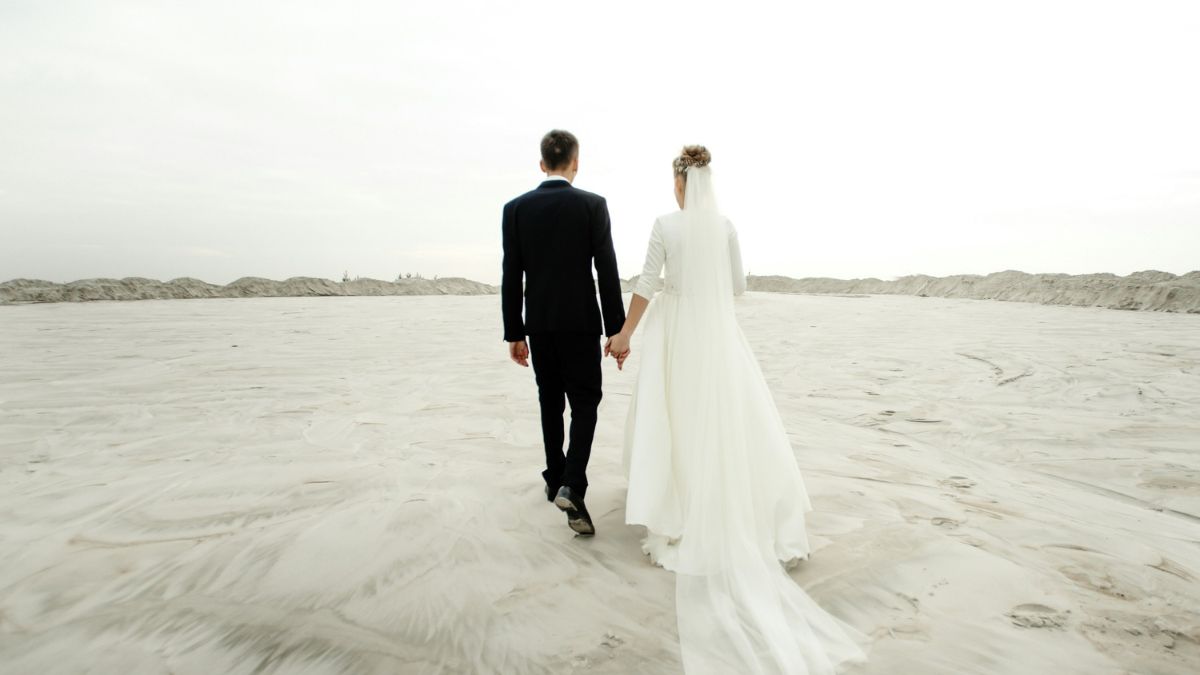

America’s Marriage Deserts
We weren’t made to live in a marriage-arid society.
08/21/24
Shane Morris

For years, the term “food desert” was a way experts described areas of the country where fresh, unprocessed groceries are difficult to find. The key insight captured by this term is that obesity and other diet-related health problems aren’t solely a matter of individual choice, especially for children. They are at least partly determined by access—or lack thereof—to quality food where people live.
What if a similar pattern applies to marriage? What if there are sections of the country best characterized as “marriage deserts,” where lasting unions aren’t just rare but virtually non-existent? That’s the argument sociologist Brad Wilcox and writer Chris Bullivant made recently in Deseret News.
They suggested that “marriage deserts” are found across demographics, from inner-city minority neighborhoods to poor, rural white towns. In such places, stable marriages have essentially disappeared, and along with them, households that model what such unions look like.
This is a relatively recent development. Wilcox and Bullivant explained that in the late 1960s, marriage was the norm across classes. Just 13% of American children lived with an unmarried parent. But fast-forward fifty years, and that number has climbed to a staggering third of all children—mostly comprising the lowest income brackets.
It’s almost like a cultural bomb went off. Such high rates of single or cohabiting parenthood results in blocks on end with no married role models. And this makes the very thought of marriage seem implausible, unrealistic, or just silly for millions of American youths. Just ask them.
The Institute for Family Studies reported that the share of high school boys who say having a good marriage and family life is “important” or “extremely important” to them fell from 75% in the 1990s to just 57% in 2021. And the proportion of high school girls who think they’d be a “very good spouse” fell by 11% in the last decade—likely reflecting a lack of role models.
Why does it matter if kids think marriage is realistic for them? Like food choices, marriage priorities have profound consequences. Having stably married parents makes it less likely that children will experience poverty or abuse, improves their performance in school, strengthens their psychological wellbeing, reduces their chances of going to jail, and greatly increases the likelihood that they, themselves, will one day get and stay married. Take away marriage as a norm, and all these benefits go too. Neither the Left nor Right have particularly helpful responses to the spread of “marriage deserts.” Progressives, of course, tend to downplay or redefine marriage and are often fine with sexual behaviors in defiance of it. Many on the Right tend to treat the decline of marriage as simply a “failure of moral character” on the part of individuals. That’s also a mistake.
While it’s true that individual choices matter deeply, those choices are never made in a vacuum. They are shaped by upbringing, education, and example, both good and bad. This is where parents are crucial, modeling virtue and integrity for their children; not because they deny personal responsibility, but because they know, as the Proverbs say, that training up a child in the way he or she should go makes a difference.
Churches and nonprofits also have a great opportunity to champion the importance of marriage for a stable society. Many organizations across the country are acknowledging that “marriage deserts” not only exist but are profoundly affecting the willingness of the next generation to get married. They are filling in the gap to irrigate those dry lands and bring back a flourishing marriage culture.
All this hangs on a common insight which, if enough people grasped it, would transform our culture: that marriage is good and good for us, the design of a Creator who actually has our best interests at heart. The decline of marriage in modern America is a tragedy because we weren’t made to live in a marriage-arid society, and that means improving what Wilcox calls “the state of our unions.” Thankfully, if these researchers and organizations are correct, the main thing many wandering in “marriage deserts” need in order to say “I do” is someone to tell and show them, “you can.”
This Breakpoint was co-authored by Shane Morris. If you’re a fan of Breakpoint, leave a review on your favorite podcast app. For more resources to live like a Christian in this cultural moment, go to breakpoint.org.
Have a Follow-up Question?
Up
Next

Related Content

© Copyright 2020, All Rights Reserved.













